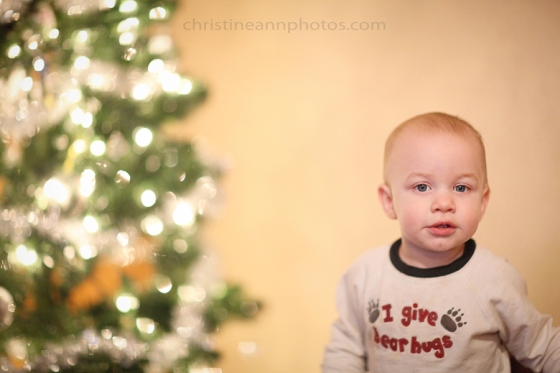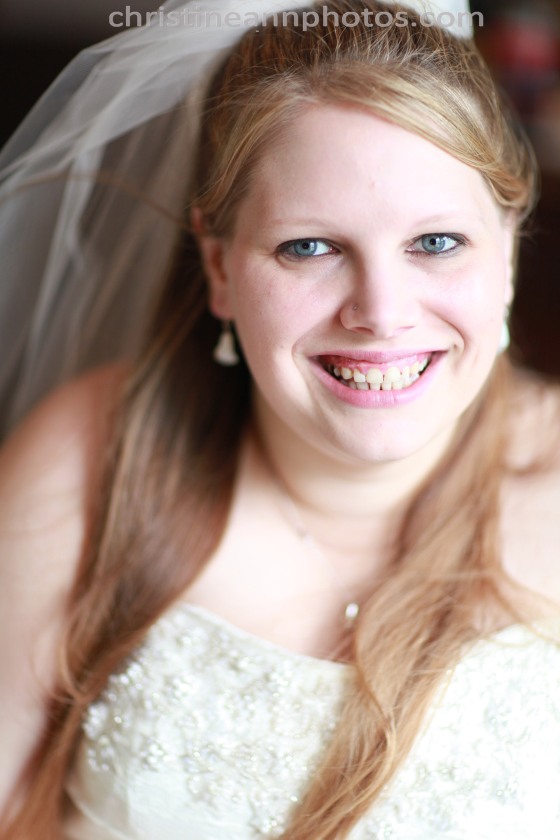Lenses today have the capability to have a much lower aperture than ever before. While this is beneficial in some areas, it is detrimental in others and you don’t want to be surprised by what the detriments are! The biggest detriment is how incredibly narrow its depth of field is. If I focus on someone’s nose, their eyes will be out of focus.. and.. yes.. this has totally happened to me :p. It’s taken me awhile to get a feel for it, and even now I sometimes underestimate it. Most people don’t/won’t notice it but photographers have “trained eyes” and it’s hard for us not to notice :).
If you aren’t sure what depth of field is,  sums it up perfectly. Essentially, it’s just how big the area that is in focus is. Aperture also plays a role in exposure but that’s a blog post for a different day.
sums it up perfectly. Essentially, it’s just how big the area that is in focus is. Aperture also plays a role in exposure but that’s a blog post for a different day.
Anyway, I am excited to own a lens that can go as low as f/1.2 😀 and I know people want to know what that looks like and how to work with it so I thought it would be helpful to post some images zoomed in on.
As always, I resize my images for the web which causes them to “blur” a little bit.. I am happy to post full resolution versions if it’s important to you to see the details, just let me know in the comments!
I have a couple samples to break down here. We’ll start with this bride. These photos were all taken at f/1.2 so it’s a great one to use as a sample.

^This is the original photo.
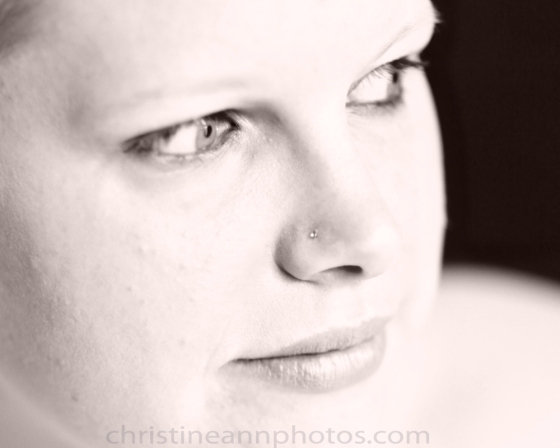
^Closeup of the photo. You can see how some spots appear in focus and some are out of focus. The eye closest to the camera is what the focus was set to. If you look up at the eyebrow above it, even that is out of focus, because f/1.2 is SO narrow.
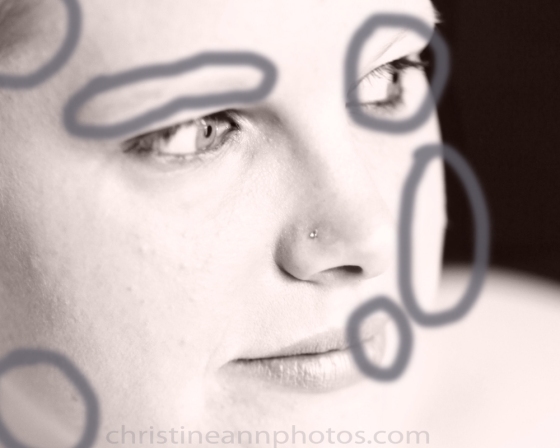
^Circled the spots that are noticably out of focus/blurred as a result of using such a lower f-stop. If I had made it more like f/4+ the entire face would be in focus.
_____
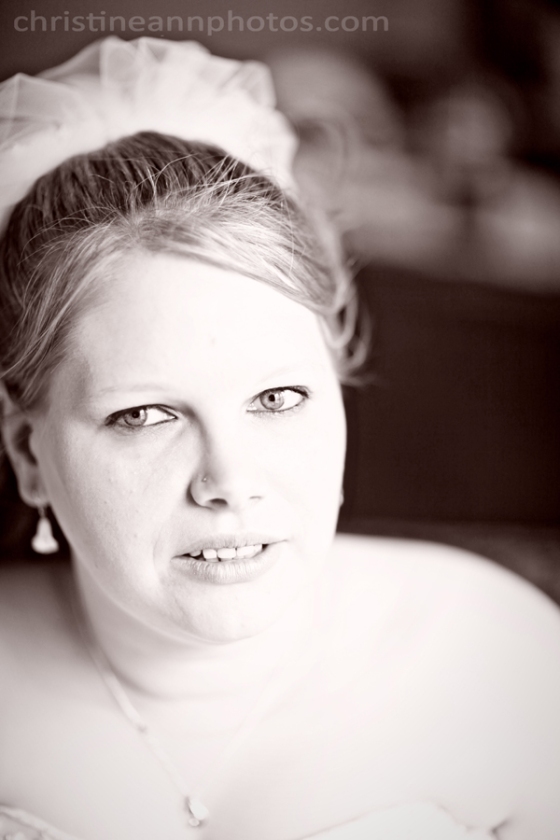
^Another photo of the bride at f/1.2
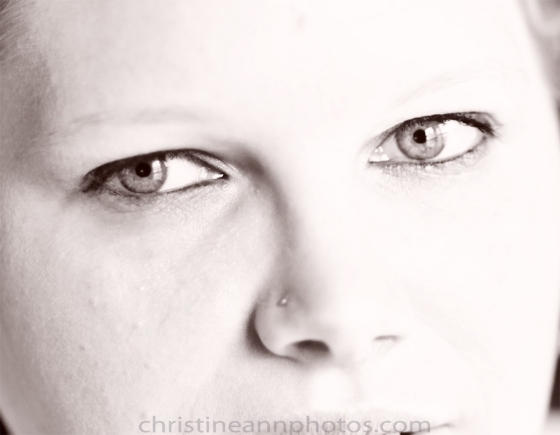
^Close up of the face.. you can see where it is in focus and out of focus.

^Out of focus areas are circled.
_____
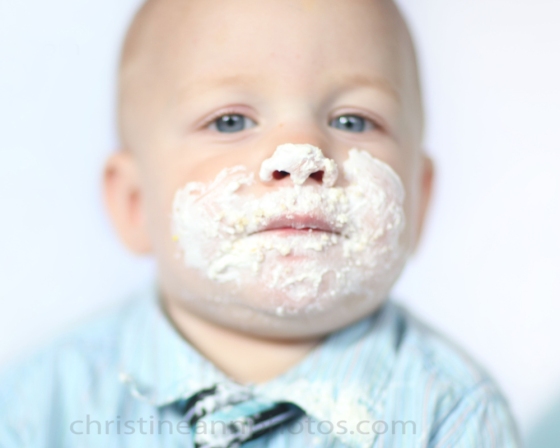
Here’s another photo taken at f/1.2. Generally you’re supposed to get the eyes in focus but on this photo the focus is landing on the lips. THe depth of field is so narrow that the lips are in focus and the eyes are out of focus.
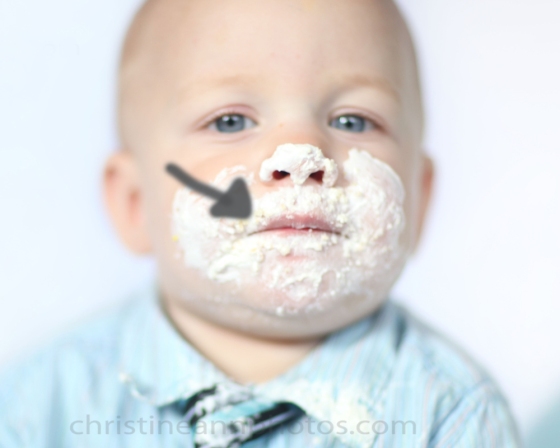
^Notice where the focus is landing in the photo (on the lips) and how the eyes are out of focus due to the narrow depth of field.
_____
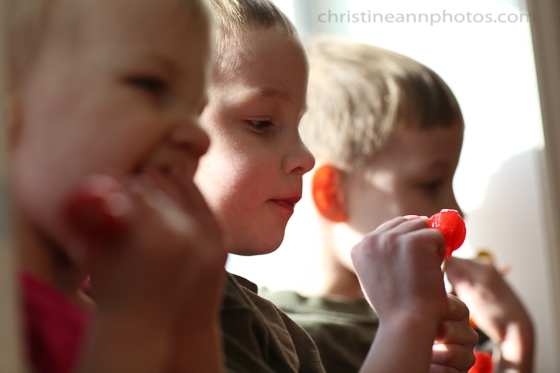
^Here is another photo with a low aperture of f/3.2. You can see where the focus lands (the kid in the middle with the sucker in the middle) and how it effects the rest of the image.. how the kid further away from the camera and closest to the camera are both blurred.
Hopefully this helps everyone understand aperture and how it effects a photo and helps people looking into the 85mm f/1.2L lens make purchasing decision. Personally I think f/1.2 is too low for most portraits. It’s just too unforgiving and leaves parts of the face out of focus )the nose, ears, hair, neck etc. I try to stay above f/2.2 at least for portraits usually unless there is low lighting.
There are a lot of other things that affect bokeh and how narrow the depth of field is. These images were all taken on a Canon Mark II 5D which has a full frame sensor which “enhances” the aperture more than a crop sensor would. If I put the same lens on my T2i (crop sensor) then the depth of field is less narrow/bigger so you do need to take into consideration what camera body you are using as to if you would get similar results. There are a few other factors that affect how narrow the depth of field is – 85mm has more bokeh than a smaller mm lens (for example if I used a 35mm 1.2, there would be more in focus and if I used it at 200mm there would be less in focus).. and how close you are standing to what/who you are photographing also impacts the image. So you should understand that this is not a cookie cutter blog post that will always be true for everyone but it should help you get a good idea of how an image shot at f/1.2 looks close up!
To see more images taken on an 85mm f/1.2L lens (without zooming in 🙂 ) check out that blog post http://wp.me/p3Jl3q-9a.
If you have any questions, don’t hesitate to ask!
-Christine Ann
Duluth Photographer Website
Duluth Senior Photographer
Duluth Photographer Facebook
Duluth Photographer Blog







